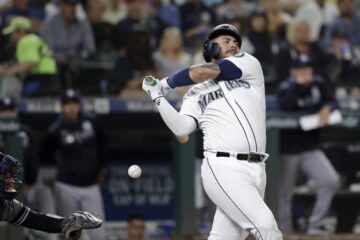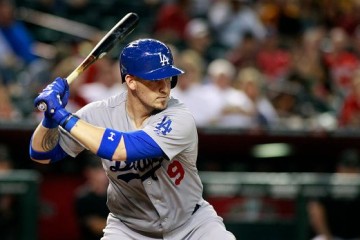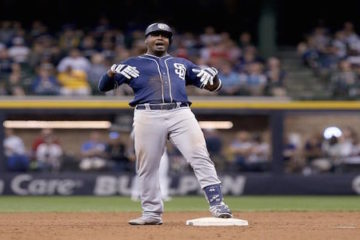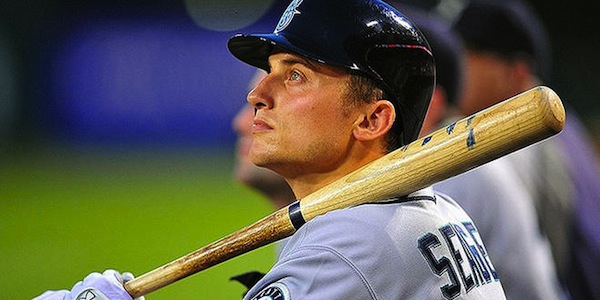2015 Fantasy Baseball: Generation Next — Catchers
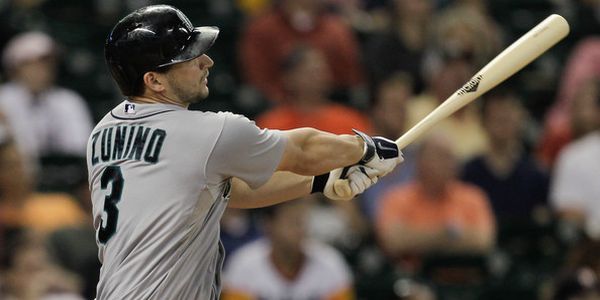
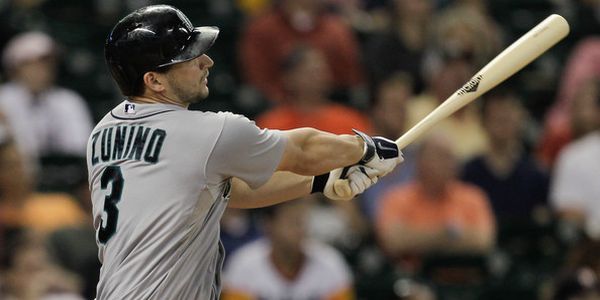
Fantasy baseball is forever changing. Of course, in the coming weeks we will see a lot of change. The annual Winter Meetings will commence before we know it and we will see a number of players changing uniforms. We’ve already seen quite a few blockbuster trades go down and the winter meetings haven’t even begun. Yet, this isn’t the kind of change that fantasy baseball players experience on an annual basis. Each position sees players fall down in the rankings and other players rise up the rankings. The players that are able to see those changes before they happen are the ones that hold up the championship trophies at the end of the season. The players that hold onto the memories of great players are the ones that end up in the Mike Trout sweepstakes the next season.
Catcher more than any other position is prone to these wild changes. There are a number of reasons for these changes that are unique to the catcher position. The defensive demands of the position dictate that catchers take longer to develop than any other position. Catchers rarely enter the big leagues ready to dominate. So, it can often seem like they are coming out of nowhere because they might not look like much right out of the gate. Of course, the flip side is also true. The physical demands of the position can zap a hitter of his effectiveness earlier than any other position. Many prominent offensive players have seemingly evaporated out of thin air in their early thirties. Therefore, at catcher, it pays more than any other position to pay attention to the younger players that may come out of nowhere. A look back at 2014 is proof positive of that fact.
2014 Generation Next: Devin Mesoraco— Cincinnati Reds
When you are looking forward it is always beneficial to begin by looking back. That sentence may not make a lot of sense on its face, but past is prologue as they always say. Mesoraco didn’t look like much when coming into 2014, but when the dust settled we were looking at a .273/25/54/80 catcher. This came in only 440 plate appearances mind you. To bring us back to the main idea though, Mesoraco made his debut in 2011. He improved each and every season, but there was nothing there to suggest that he would suddenly explode and become a top three fantasy catcher.
This is the important point to take from all of this. A quick look back at past breakout players demonstrates a similar story unfolding. Catchers don’t gradually become breakout players even if other players at other positions may show that gradual improvement. There comes a time when they get it and it all clicks. Jonathan Lucroy was that guy in 2013 and his performance this past season shows that it wasn’t a blip on the radar. In Mesoraco’s case, his BABIP improved in 2014, but it wasn’t outrageously good either (.309), so we can guess that he has arrived as a legitimate fantasy regular. Most of the improvement has come on the power end of the equation. So, let’s see what’s to come this year.
A large part of the fun of picking the next generation at any position is that there are no guarantees. Looking for a jump in performance means that you won’t see that kind of performance in the numbers. It means we are guessing. So, at each position we will present the top three candidates for breakout player of the year. We know full well that our first pick won’t always be the guy, but hopefully one of the three will make the jump.
Number One Breakout Candidate: Mike Zunino— Seattle Mariners
Supposedly, the Mariners were heavy in on the Russell Martin sweepstakes. That proves that even they have their doubts as to whether Zunino will ever develop into a top five overall catcher. A quick look at his history demonstrates that patience is in order. The Mariners selected him number three overall in the 2012 draft. That’s right, he made his major league debut about a calendar year after he was drafted. Remember, catcher is the hardest position to learn. In college, most of the pitches are called by the manager. Professional catchers have to learn to read scouting reports on opposing hitters, work with pitchers, and continually work on framing pitches and monitoring the running game.
Zunino’s developments has actually been quite predictable. He is advanced as a hitter, but his hitting performance has almost ground to a halt as he works on these other skills. Funny, but as analytics has caught up on quantifying these other skills (particularly pitch framing), we see an increased emphasis on this in development. It is basic human nature and sports psychology. When you focus more attention on one skill, the other skills take a back seat and don’t develop as much.
. . . . . . . . .AVG. . . . .OBP. . . .SLG. . . .BABIP. . . .HR. . . .Runs. . . .RBI
2013. . . . ..214. . . . ..290. . . ..329. . . . ..267. . . . .. .5. . . . . .22. . . . ..14
2014. . . . ..199. . . . ..254. . . ..404. . . . ..248. . . . ..22. . . . …51. . . . ..60
When looking at the potential for breakout players, we start with what is already there. Sure, Zunino regressed big time in his batting average on base percentage, but his BABIP is partially to blame for that. If he hits .300 on balls in play in 2015 then we are looking at a .250 average even without any kind of improvement across the board. Add that to his 20+ home runs power and you are already looking at a fantasy regular. He may very well show improvement since he came in as a gifted offensive player. Someday, his hitting will catch up when he feels comfortable with all of his other responsibilities. That may very well come this season.
Number Two Breakout Candidate: Travis D’Arnauld— New York Mets
The Mets surrendered a lot to bring D’Arnauld over. They traded R.A. Dickey to the Blue Jays to get their catcher of the future. At one point last season, the future was put on hold. The young backstop got optioned back to the minors because things just weren’t going his way. Unlike Zunino, he spent more time in the minors and even arrived later than some people thought he would. The assumption was that he would hit the ground running, but that rarely ever happens with catchers. There is still a lot to learn at the big league level, no matter how much time you spend in the minors.
D’Arnauld made his professional debut back in 2007 at the tender age of 18 years old. In eight minor league seasons, he produced at a .290/.350/.488 clip, so some could rightfully assume that he will eventually approach those numbers at the big league level. It didn’t happen a year ago, but sometimes the overall numbers mask something else that is going on. Overall, D’Arnauld hit a paltry .242 with an on base percentage near .300, but the before and after numbers reveal something completely different. Take a look at D’Arnauld before and after the all-star break.
. . . . . . . . . .PA. . . . .AVG. . . .OBP. . . .SLG. . . .HR. . . .Runs. . . .RBI
Before. . . .210. . . . ..217. . . ..292. . . ..354. . . . .6. . . . . .18. . . . . ..19
After. . . . ..211. . . . . 265. . . ..313. . . ..474. . . . .7. . . . . ..30. . . . . .22
The second guy would produce a .265/14/60/44 in a full season. Let’s keep in mind a couple of things before we pooh pooh those numbers. First, we are talking about catchers and a catcher that spent some time in the minors. Add about 100 plate appearances to that and you are looking at two or three more home runs and probably between 10 and 15 more runs and RBI. Secondly, offense is down overall. Suddenly a .265/17/70/60 catcher doesn’t look all that bad. It probably would be a better bet than even Russell Martin at this stage in their perspective careers.
Number Three Breakout Candidate: Christian Betancourt
If this were a horse race, Betancourt would be the 50 to one shot that you just got to throw down a few bucks on. It looks like Evan Gattis will either be traded or will be transferred out to the outfield. So, Betancourt will get the majority of the plate appearances from behind the dish and his defense will keep him in the lineup. So, based on the fact that he is now a regular and that few people will pick him, he qualifies as a breakout candidate. However, that designation says more about the position than it does about Betancourt.
Betancourt never hit more than 12 home runs or hit better than .289 in any minor league season. We aren’t talking about Johnny Bench or Yogi Berra here. We are probably talking Bob Boone or a Brad Ausmus. This is not demeaning either of those guys as they might be a pitcher’s best friend. Betancourt may turn out to be the same and anyone will tell you that a run saved is just as good as a run created. Of course, no one that plays fantasy baseball would tell you that. However, this doesn’t mean that he has a zero percent chance of producing some offensive numbers. There have certainly been a number of guys that didn’t produce at the minor league level only to produce big numbers at the big league level.
That being said, the scouting reports all say that Betancourt will likely be the same guy as he has been in the minors. Whether you select him late in your draft (or let him pass through to waivers) depends on what happens around him on the depth chart. If Gattis gets dealt you are likely looking at a catcher that will get 400 or more plate appearances. Those guys are usually worth a late look in the draft because backups are always necessary in a long season. If Gattis stays it is more likely that the Braves will employ a kind of hybrid platoon where Betancourt’s exposure is limited.


